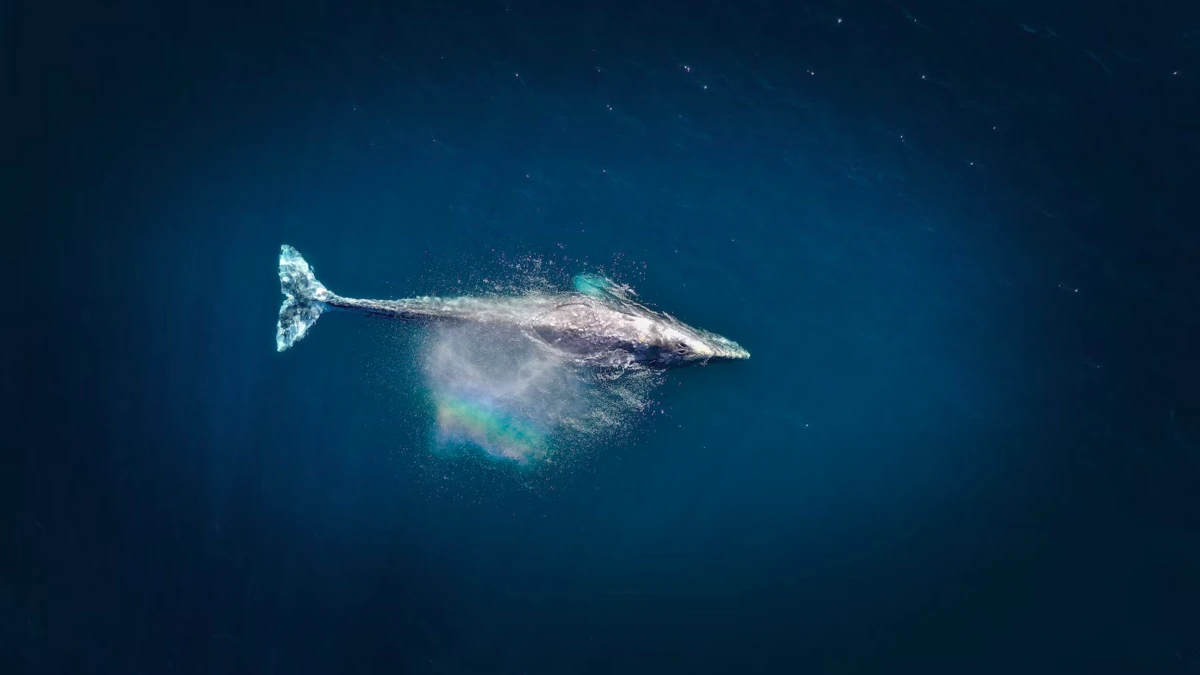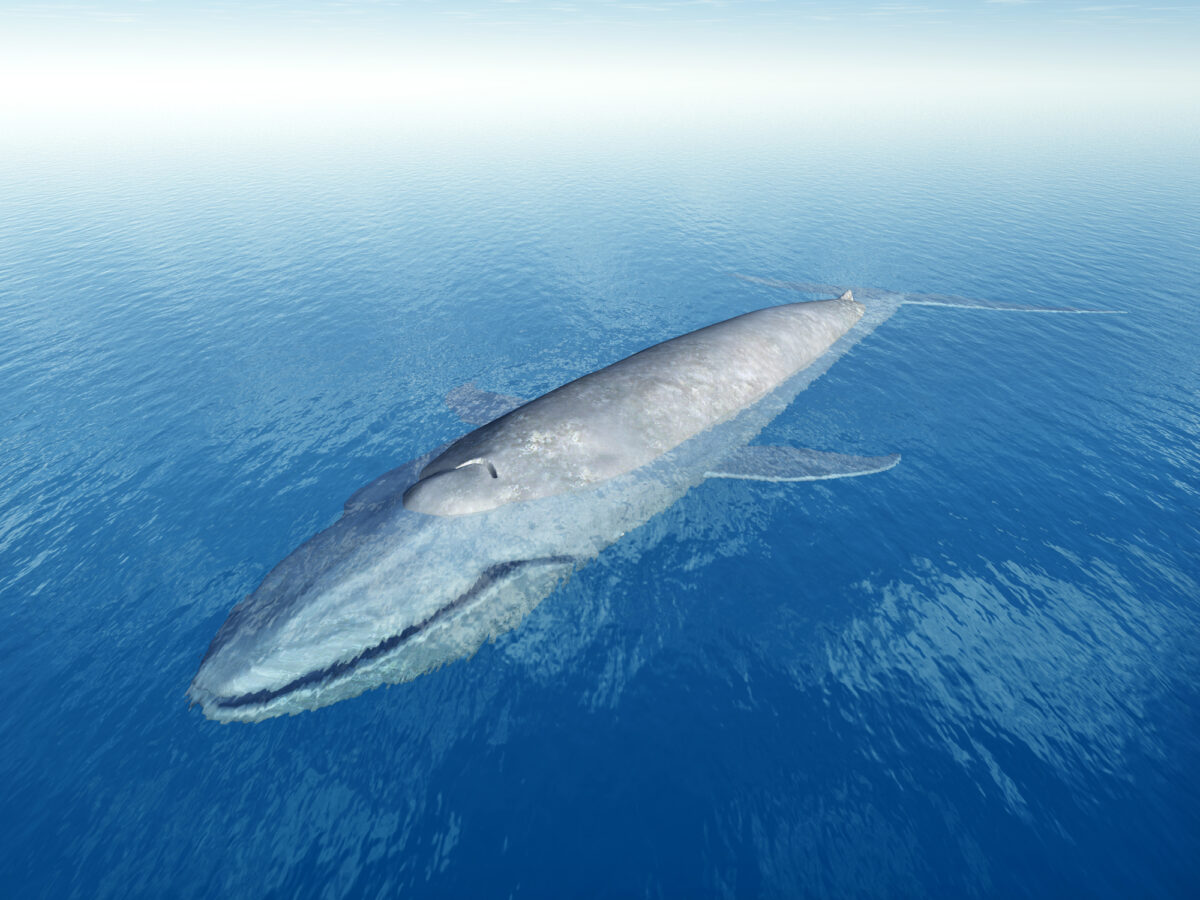The Fastest Growing Animal: The Blue Whale Calf’s Rapid Growth
The ocean is home to remarkable creatures, with the blue whale calf being one of the most captivating. These majestic marine mammals grow up to 200 lbs every day and weigh around 2.5 tons at birth. Their unparalleled growth rate testifies to their unique physiology and evolutionary history. Join us as we dive into the secrets behind the blue whale calf’s rapid development, exploring its diet, environment, and other contributing factors. Let’s discover together the fastest-growing animal in the world: the blue whale calf.
The Physiology of Blue Whale Calves

Blue whale calves are born as the largest mammal in the world, weighing around 2.5 tons, despite their short gestation period of only 10-12 months. This is vital for survival in an ocean filled with predators.
Newborn blue whale calves are about 25 feet long and nurse for the first 6-8 months of their lives. During this time, they grow at an incredible rate of 8 inches per day, consuming up to 50 gallons of their mother’s milk per day.
Fast Growth Rate and Unique Physiology of Blue Whale Calves

Blue whale calves grow rapidly due to their unique physiology, which enables them to consume and metabolize large amounts of food. As one of the largest animals on earth, blue whales require a significant amount of sustenance to support their massive bodies.
The calf’s digestive system is comparable to that of adults, allowing it to process vast quantities of milk and krill, the primary food source for these whales. Adult blue whales can consume up to 4 tons of krill per day, whereas calves consume less than half of that amount.
To regulate their body temperature in cold waters and support their quick growth, blue whale calves possess a blubber layer that acts as insulation and energy storage.
Comparing Growth Rates Across Animal Kingdom
The growth rate of a blue whale calf is unmatched among all animals. Other mammals, reptiles, and even some fish can’t grow as fast as a blue whale calf. For instance, a human baby triples its birth weight in the first year, but a blue whale calf grows up to 25 feet long and gains over 150,000 pounds in the same period. The calf’s growth rate is so remarkable that certain scientists have likened it to cancer cell growth.

Factors Affecting Growth of Blue Whale Calves
Blue whale calf’s rapid growth is not only because of its unique physiology but also due to various environmental factors. These include:
Diet and Nutrition
The consumption of up to 100 gallons of rich milk daily, containing fat and protein, helps in the optimum growth of the calf. As it grows, it feeds on krill, consuming up to 8,000 pounds daily for almost one and a half years.
Water Temperature and Availability
The blue whale calves grow well in colder waters, ranging from 0°C to 15°C, which are nutrient-rich and contain higher dissolved oxygen levels. The availability of water is also crucial as dehydration can lead to metabolic stress affecting calf’s growth.
Predators and Protection
Killer whales, sharks, and humans pose threats to blue whale calf’s growth. To provide protection, mothers nurse and protect their calves for 6-8 months and teach them survival skills to prevent predators after weaning off.
Evolutionary History and Rapid Growth of the Blue Whale Calf
This article discusses the evolutionary history and rapid growth of the blue whale calf, the largest animal species on Earth. Despite starting out small and vulnerable at birth, blue whale calves grow rapidly due to various behavioral and developmental patterns, such as nursing on high-fat milk provided by their mothers and developing a unique swimming style that increases blood flow to their muscles. Scientists have also identified certain genetic factors that contribute to their impressive growth rate, particularly the activation of genes responsible for producing high-fat milk with an immense source of energy.
Blue Whale Calves Have Evolved to Produce More Growth Hormones than Any Other Mammal
Recent genetic studies have demonstrated that blue whale calves possess a unique ability to generate larger amounts of growth hormones than any other mammal. These hormones activate the calf’s cells to multiply and grow at a faster pace, resulting in accelerated development and increased size.
Preservation and Future Implications
Despite the blue whale calf’s remarkable growth potential, it still faces several threats that could have severe consequences for its population and the larger ecosystem. This section will examine these hazards, explore the environmental importance of the blue whale calf, and outline some conservation and protection strategies.
The Blue Whale Calf’s Population Threats
One of the most significant dangers to the blue whale calf’s population is human activity, particularly commercial whaling. Despite being safeguarded under international law, illegal hunting of blue whales continues, with certain populations being targeted more than others. This has significantly reduced their numbers, primarily in specific areas such as the eastern Pacific Ocean.
Additionally, climate change and pollution are posing threats to blue whales. Changes in ocean temperatures, acidity, and currents can disrupt food availability and distribution, while pollution can harm their health and reproductive abilities.
Ecological Significance and Impact on the Environment
The blue whale calf plays a crucial role in maintaining balance and ecological integrity, making it an essential component of the ecosystem. As the largest animal globally, it consumes vast amounts of krill daily, contributing to nutrient circulation and marine cycles. In essence, blue whales assist in keeping oceans healthy and all creatures living within them in safe balance.
Moreover, the blue whale calf is a significant cultural symbol, with many communities throughout history relying on its meat, oil, and bones for survival. Its unique features and value to the marine environment make it a critical species to conserve and protect.
Conservation and Protection Strategies
In order to protect and preserve the population of blue whale calves, it is necessary to take a comprehensive approach. This should involve reducing commercial whaling, regulating ocean pollution, addressing issues related to sustainable fishing and climate change, and increasing awareness and education about the importance of blue whale calves for the environment and communities around the world.
For additional information on blue whales, click here.
Frequently Asked Questions
How quickly do blue whale calves grow?
Blue whale calves are the world’s fastest-growing animals, and they can gain up to 200 lbs per day. At birth, they can weigh up to 2.5 tons.
What is the diet of blue whale calves?
Blue whale calves feed on their mother’s milk, which is high in fat and protein. In a day, a calf can consume around 50 gallons of milk.
How long does it take for blue whale calves to reach full size?
It takes approximately 10-15 years for blue whale calves to reach their maximum size. They can grow up to 100 feet in length and weigh as much as 200 tons, equivalent to the weight of 33 elephants!
Main Takeaways
Title: The Blue Whale Calf – A Marvel of Nature
At birth, the blue whale calf weighs about 2.5 tons and is the largest mammal in the world. While adult blue whales have no natural predators, killer whales, sharks, and humans pose a threat to calves. These mammals prefer colder waters rich in nutrients like phytoplankton and zooplankton. Scientists have discovered genetic factors that contribute to their impressive growth rate. The blue whale calf’s evolutionary history dates back to the early Miocene period, about 23 million years ago.
The blue whale calf’s incredible growth rate is remarkable as it can reach up to 200 tons in just 16 months. Understanding their growth process is crucial for conservation efforts to protect these majestic animals from harm. Appreciating their awe-inspiring size and natural habitats while working towards their survival is key.